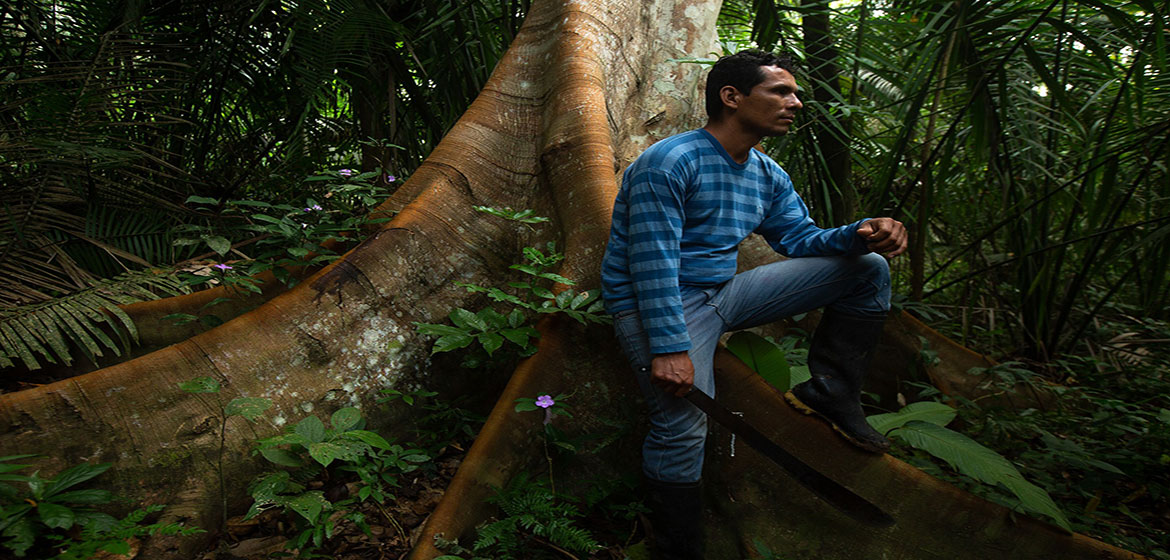Examining root causes, preserving connections to roots
By Eileen Mairena-Cunningham, indigenous Miskitu from Nicaragua and member of Indigenous Peoples Major Group for Sustainable Development. Any views expressed are her own.
Migration is a complex issue, but if we add to this the ethnic element and talk about the migration of indigenous peoples, the situation becomes even more complicated.
The migration of indigenous peoples in Latin America and other regions of the world has had multiple causes. In some cases it is associated with cultural practices or related to the dispossession of our ancestral territories and forced displacement; installation of mega projects that have been given without taking into account the basic right of free, prior and informed consent; effects of climate change; and environmental imbalances. In other cases it is associated with the search for work or national legislative systems that are unfair and favor the dispossession or exploitation of our ancestral lands.
Regardless of the cause that drives the migration of indigenous men, women, youth and children, the effect is the same: the territorial uprooting and therefore the loss of indigenous knowledge and culture itself. Before talking about the effects of such processes on natural landscapes and forests, we have to remember that indigenous peoples have a deep spiritual connection with our lands, territories and natural resources.
For others, the land has an economic condition. For us the land and territories are our Mother, the space of cultural reproduction and Laman Laka (Miskitu for ‘wellbeing’). It is important to take into account that the vulnerability of indigenous migrants increases if they are women or children, since they are more easily involved in situations of violence and abuse.
For this reason, migration in many cases has had adverse effects, since being separated from a physical space has meant a territorial and cultural uprooting. This uprooting leads to the cultural loss and ownership of our lands, weakening our systems of self-governance and therefore self-determination.
It is necessary to understand that this weakening of our traditional systems of governance also has negative effects on our territories – which in many countries are the areas where the greatest biological diversity is found.
A territorial space with weak indigenous governance will not be able to stop the interference of external interests in our territories. In some cases, these are states that rely on the logic of the greater good of the nation to allow the entry of companies that are not environmentally sustainable, or farmers who promote actions of changes in land use with large impacts on ecosystems.
It is therefore necessary to understand:
- A number of national and international mechanisms and norms regarding collective rights of indigenous peoples now exist, but currently these rights are under pressure and setbacks have been observed. As an example, I can mention the criminalization of the defenders of the rights and territories of the indigenous peoples, and an ever-increasing number of them are being killed.
- The legal security of indigenous lands must be fundamental in order to reduce adverse migration processes as well as strengthen indigenous territorial governance.
- Given the complexity of indigenous mobility, qualitative and ethnographic studies must be conducted, which will lead to a greater understanding of the social and cultural aspects of indigenous peoples that are moving across borders and toward urban areas as well as the impact of this on our traditional lands and territories.
- Considering the crucial role that indigenous women play in maintaining sociocultural ties and the cohesion of their homes and communities, we all have to take actions necessary to eliminate the violation of our rights by creating conditions that facilitate their access to basic services and opportunities for improving the quality of life for them and their families.
- This can be achieved with a set of collective actions, in which indigenous peoples should have active and full participation.
- Active and full participation of representative institutions of indigenous peoples that make decisions for the design and implementation of actions that can solve these problems is needed.
- The self-determination of indigenous peoples must be respected, as it allows individuals and groups that have left, been displaced or have migrated from their ancestral lands to maintain a link to their indigenous identity.
- Indigenous peoples’ centers in urban areas need to be created to address their needs and assistance, including support mechanisms that allow involuntarily displaced indigenous peoples to return to their original communities.
- To combat the adverse effects of migration, states in cooperation with indigenous peoples, should provide employment and economic development opportunities within indigenous territories.
- There is a need for statistical information on indigenous peoples (who, how many, where) to serve as basic input to develop policies and programs.
Source:
Related to SDG 10: Reduced inequalities and SDG 11: Sustainable cities and communities

